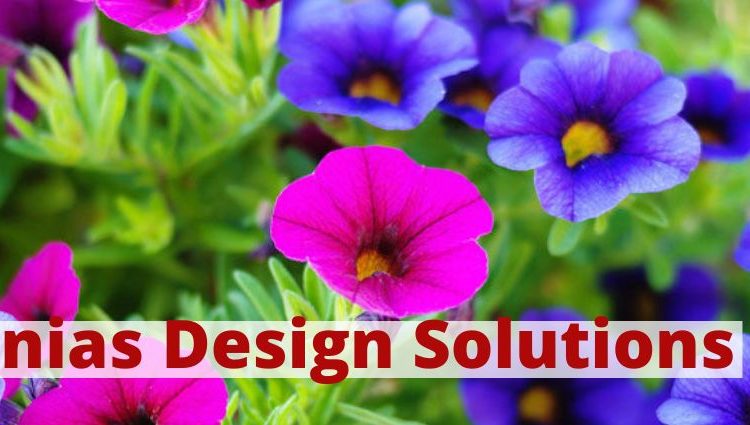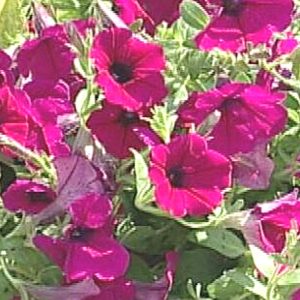Petunias Design Solutions
Petunias provide inexpensive and eye-catching results for many garden landscape color and design problem spots. Realistic solutions, from start to finish, can come about in one weekend or less. Success is guaranteed when the project is embarked upon in an unhurried and systematic approach.
Design and Complete One Weekend Projects for Beautiful Petunia Gardens
Phase One – Gathering Information ![]()
- Take a candid look at the problem area and assess its microclimate.
Does the area receive at least six hours of direct sun in a day? Petunias are sun lovers so less than this amount means weak spindly plants and a failed project.
Is the soil good enough to support annual plants? Petunias need deep, loose, fertile, well-drained soil that is near neutral pH, and contains some organic matter. Supplement inadequate soil with homemade compost or bags of commercial compost material.
- Measure the projected area and make a rough diagram on graph paper.
Phase Two – Problem Solutions
- Look over microclimate facts to make sure Petunias are the correct plants for the problem.
- Decide how to solve your landscape problem. Petunias planted alone or with other annuals in traditional pots solve a huge number of problems when strategically placed. Also, there are other familiar garden landscape zones where Petunias used imaginatively and planted correctly can make an impact:
- Entrance Effects: Huge containers or traditional pedestal baskets of Easy Petunias make an impressive colorful welcome either placed along a path or walkway, or at a main entrance way. Edging shrub beds with either Easy Wave® or Tidal Petunias welcomes visitors as it brightens up the entrance area.
- Curb Appeal: Tidal Petunias in hot colors create masses of spreading color especially when mixed with tall and medium-sized annuals in complementary colors.
- Temporary Hedges and Cover-ups: Tidal Wave ® petunias can create flowery hedges in confined spaces because they can grow two to three feet upward like a vine! They need support from short fences or bushes to do this.
- Movable Color: Liven up annual beds, perennial borders, or shrub plantings with pots of Wave® petunias. Pots filled with one color look stylish, whereas pots filled with mixtures like ‘O Canada’ or ‘The Flag’ create cheerful accents.
- Hanging Pots: Choices are endless, so choose one color scheme or mixture, and stick to it. The best petunias for hanging pots are Double Wave® or Easy Wave®.
Check Out: 5 Do-It-Yourself Landscaping Design Ideas
Phase Three – Plan Execution
- Purchase lightweight container soil for pots, or work and amend garden soil. Loose and well-drained soil is best for petunias.
- Purchase chosen selections of Petunias from retailers who sell fresh, well-cared-for, and vigorous plants.
- Plant successfully by digging holes in soil large enough for roots to spread at planting spaces suggested by Ball Horticultural Co. for each type of Wave® petunia.
- Carefully remove plants from pots and separate roots from potting soil; place in hole and spread out roots; carefully pack soil around roots; water gently and add soil left in pots.
Water in small amounts each day until Petunias begin to grow.




Comments are closed, but trackbacks and pingbacks are open.